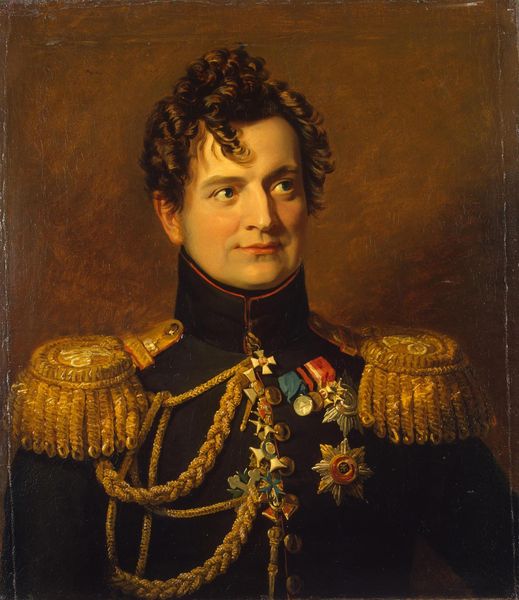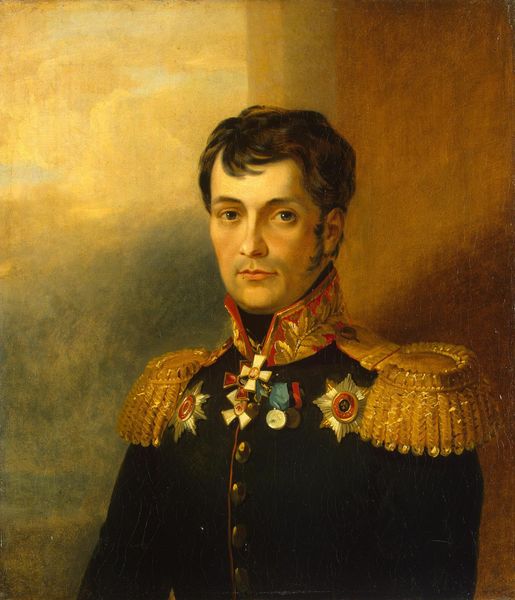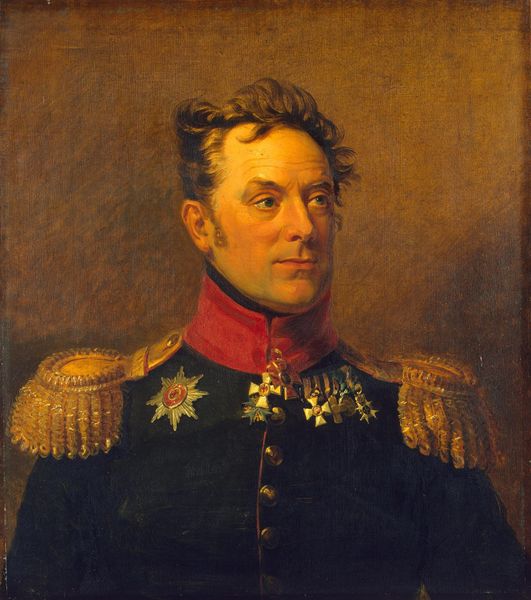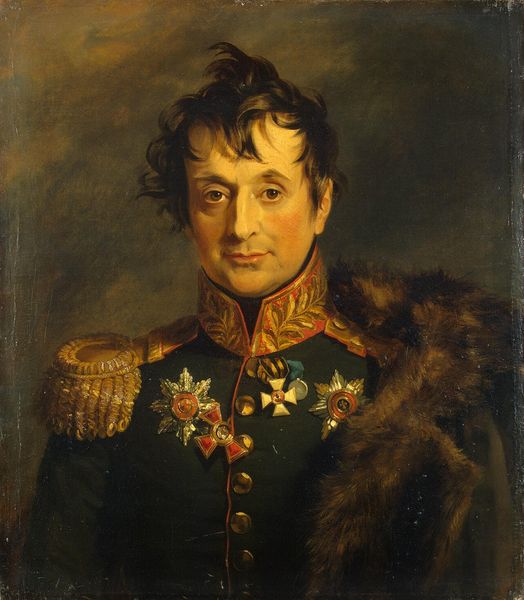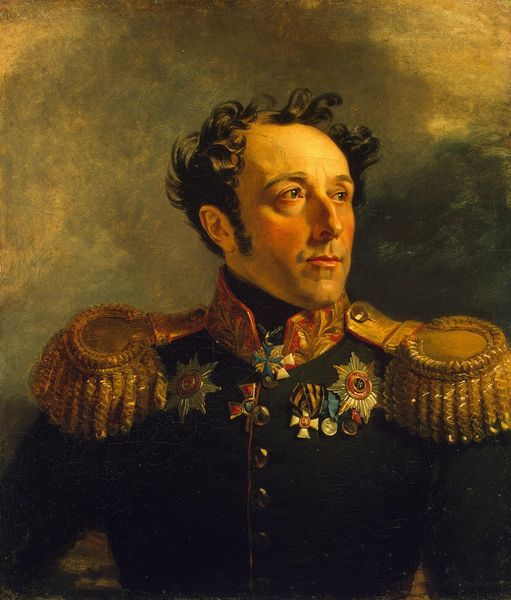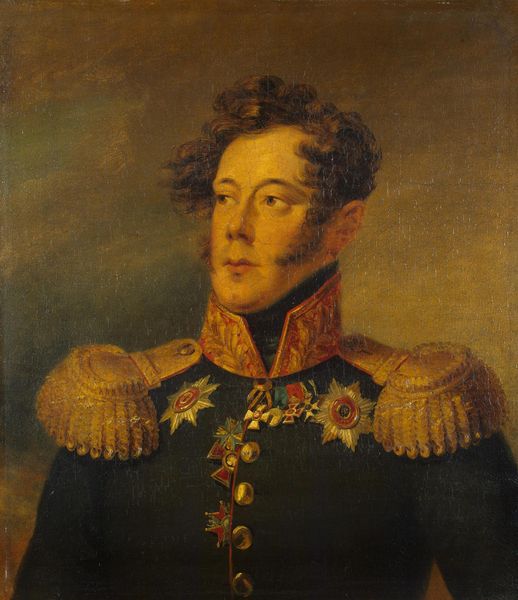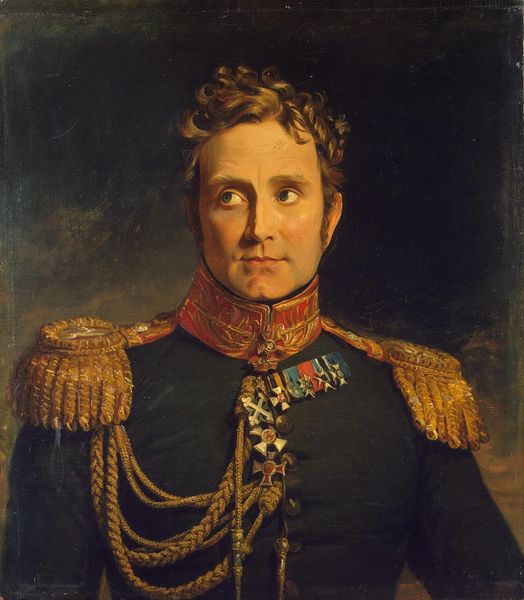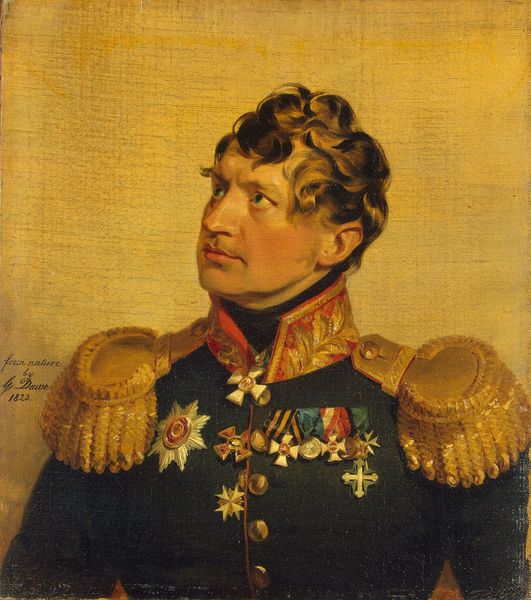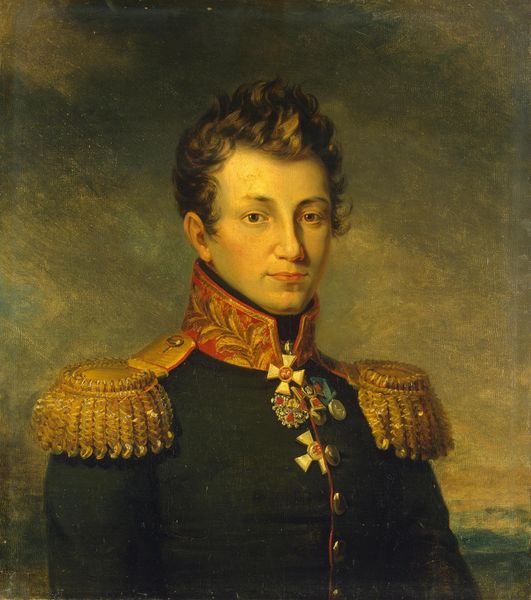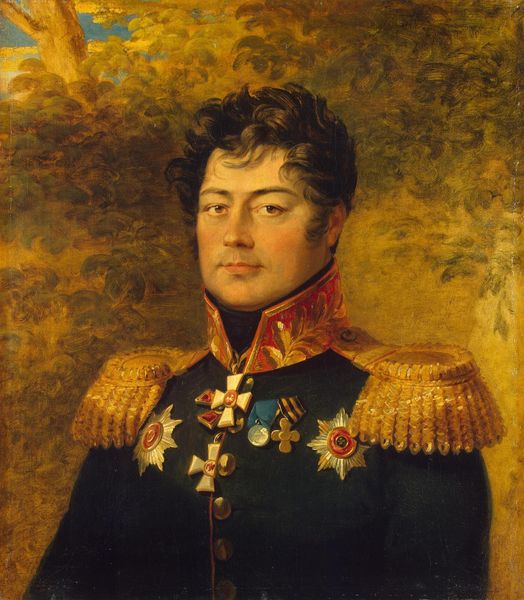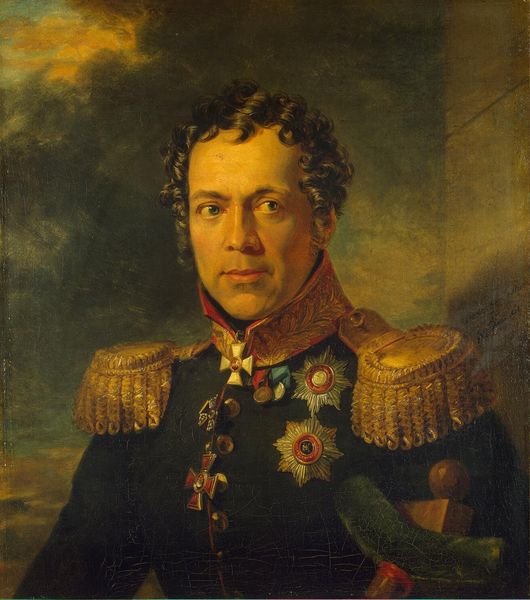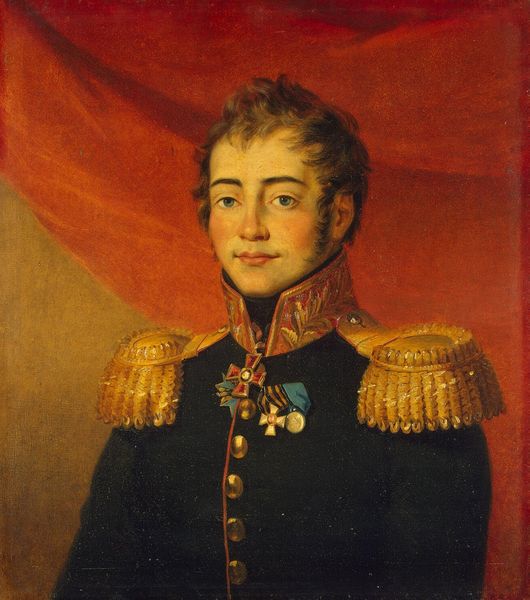
painting, oil-paint
#
portrait
#
painting
#
oil-paint
#
romanticism
#
history-painting
Copyright: Public domain
Curator: Here we see "The Portrait of Duke Eugen of Württemberg," created by George Dawe around 1825. It now resides in the Hermitage Museum. My first impression is somber. There is a weight of expectation on his face. Editor: I'm struck by the almost obsessive detail applied to the epaulettes and decorations on his uniform, and how they contrast against the almost unfinished background. The gold embroidery and various medals, these speak to the means of production and who ultimately paid for Dawe's labor. Was it patronage or true portraiture? Curator: Absolutely. The array of medals – those aren't just decorations, each one is a symbolic representation of duty and accomplishment. Think of the visual language of power they communicate. We might research each of those crosses, eagles, and stars to understand exactly what actions the Duke was being honored for. Editor: Consider too the labor invested in applying those tiny dabs of paint to render each strand of metallic thread on the epaulettes. Oil paints aren't cheap either. It is a fascinating snapshot into 19th century power structures, consumption and craftmanship all colliding on a single canvas. Curator: And speaking of colliding, the way Dawe presents him almost softens the blow. Despite the finery and status symbols, the Duke's expression projects an internal humanity, maybe even a hint of vulnerability. It makes one wonder how accurate or constructed this visual image truly is. Is he weary of all of it? Editor: Interesting! So much portraiture of nobility tries to project some sort of divine right or idealized power. I’m more inclined to see this portrait as the convergence of very specific materials, skill sets, and financial resources to construct an image in line with very material societal power structures. Curator: Yes, Dawe uses iconography but what did it truly mean to those viewing it then and now? Food for thought. Editor: Agreed. When we examine the work this closely, the romantic image cracks to reveal a far more tangible framework of society, commerce and labor in artistic production.
Comments
No comments
Be the first to comment and join the conversation on the ultimate creative platform.
